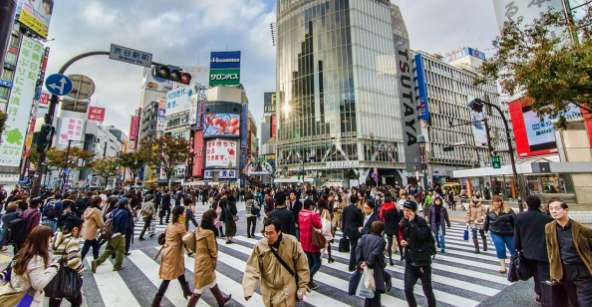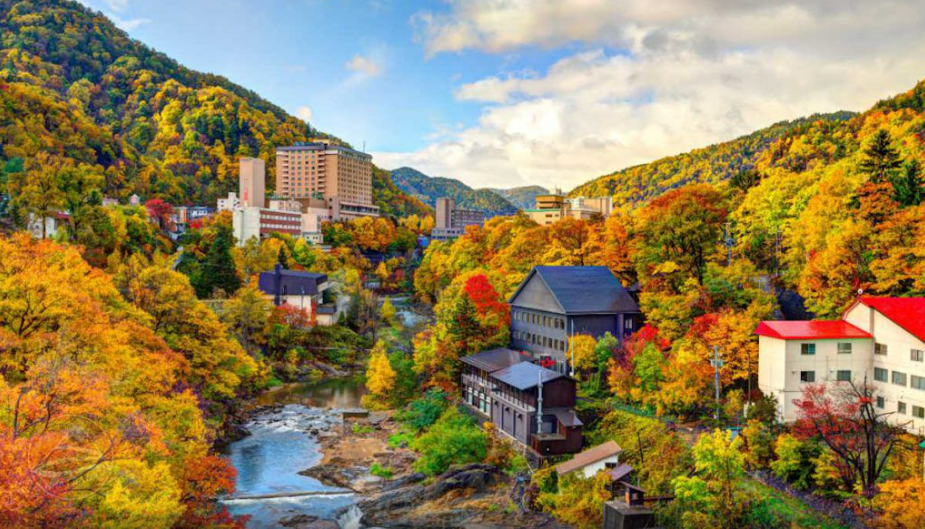Why will Obon 2025 leave you in awe of its beauty?
Date: 2025.10.25
🏮 OBON 2025: A SPIRITUAL JOURNEY & UNIQUE CULTURAL EXPERIENCE 🎎
In August, vibrant lanterns ✨ illuminate streets across Japan as Obon—the nation’s most sacred ancestral festival—returns. In 2025, Obon brings a record-breaking 9-day holiday and a wealth of mesmerizing experiences: solemn rituals, joyful dances, and dazzling festivals🌸.
Millions of locals and travelers come together in warmth, reconnecting with their roots through Japan’s most heartfelt cultural celebration. Don’t miss this extraordinary opportunity to enjoy a meaningful and unforgettable Obon season! ✨

1. The beauty of Traditions
a. Sacred Origins 📜
The origins of Obon lie in a moving Buddhist tale about Mokuren, who used supernatural powers to save his mother from hell. The Buddha advised him to offer food to monks on the 15th day of the 7th month to ease her soul.
This sacred ritual evolved into one of Japan’s three major festivals—deeply spiritual and filled with warmth and humanity.
b. Meaningful customs
🔥 Mukaebi – Welcoming Fire: Lantern fires are lit at entrances on August 12 to guide ancestral spirits home.
🍆🥒 Shōryō-uma – Spirit Horses: Eggplants and cucumbers with bamboo sticks become symbolic steeds for ancestral travel.
🏮 Toro Nagashi – Floating Lanterns: Thousands of lanterns are released on rivers at the end of the festival, gently sending spirits back in peace.
Each ritual reflects respect for ancestors and reinforces Japanese values of love, family, and gratitude.
2. Highlights of Obon 2025
a. A Rare “Golden” 9-Day Holiday
Obon 2025 runs from Wednesday to Friday (Aug 13–15). With Mountain Day (山の日) on Aug 11 (Monday) and compensatory leave on Aug 16 (Saturday), taking Aug 12 off turns it into a 9-day break (Aug 11–19).
A perfect chance to enjoy an extended and relaxing holiday unlike any Obon before.
b. Regional Obon Festivals 🌍
Obon 2025 coincides with or is adjacent to many stunning festivals across Japan:
| No. | Festival Name | Dates | Location |
|---|---|---|---|
| 1 | Gion Festival | Jul 1 – 31 | Kyoto City, Kyoto |
| 2 | Hachinohe Sansha Taisai | Jul 31 – Aug 4 | Hachinohe City, Aomori |
| 3 | Hakodate Port Festival | Aug 1 – 5 | Hakodate City, Hokkaido |
| 4 | Morioka Sansa Odori | Aug 1 – 4 | Morioka City, Iwate |
| 5 | Aomori Nebuta Festival | Aug 2 – 7 | Aomori City, Aomori |
| 6 | Waraji Festival | Aug 1 – 3 | Fukushima City, Fukushima |
| 7 | Nara Tokae (Candle Festival) | Aug 5 – 14 | Nara City, Nara |
| 8 | Biwa Lake Fireworks | Aug 8 | Otsu City, Shiga |
| 9 | Yosakoi Festival | Aug 9 – 12 | Kochi City, Kochi |
| 10 | Hokkaido Bon Odori | Aug 19 | Kushiro City, Hokkaido |
| 11 | Tokushima Awa Odori | Aug 11 – 15 | Tokushima City, Tokushima |
| 12 | Tottori Shan Shan Festival | Aug 13 – 15 | Tottori City, Tottori |
| 13 | Shōryō Nagashi | Aug 15 | Nagasaki City, Nagasaki |
| 14 | Gozan no Okuribi | Aug 16 | Kyoto City, Kyoto |
| 15 | Funakko Nagashi | ~Aug 16 | Morioka City, Iwate |
| 16 | Asakusa Samba Carnival | ~Aug 30 | Taito Ward, Tokyo |
| 17 | Owara Kaze no Bon | Sep 1 – 3 | Yatsuo Town, Toyama City, Toyama |
3. Can’t-Miss Obon Experiences
a. Instagrammable Spots 📷
⛰️ Kyoto – Gozan no Okuribi: Five mountains lit with giant Kanji characters—best viewed from Kiyomizu-dera Temple.
🏝️ Miyajima: Lanterns glow over crimson waves, blending fantasy and reality.
🏘️ Takayama: A beautifully preserved town that offers an authentic and soulful Obon atmosphere.
b. Obon Cuisine – subtle and meaningful 🍡
– Ohagi (sweet rice cakes): Symbol of gratitude, offered to ancestors during Obon.
– Somen Nagashi: Flowing cold noodles in bamboo channels—fun and refreshing for summer.
– Tri-color Dango: Red (human), white (heaven), green (earth)—symbolizing harmony with nature.
4. Tips for Travel, Stay & Participation
🚅 Avoid traffic & ticket shortages
– Book trains/flights at least 2–3 months early
– Avoid traveling on peak days: Aug 13 & 16
-Note that domestic and regional flights also sell out quickly
– Have backup plans for delays or fully booked transport
🏨 Where to Stay
– Choose a Ryokan near the event area
– Consider staying outside city centers for lower prices and fewer crowds
– Book through Rakuten Travel, Agoda, Booking.com
🎒 Festival Prep Tips
– Pack light for ease of movement
– Bring water and snacks in case of crowds or long waits
– Study the event map and schedule ahead
– Check the weather forecast for proper rain/sun protection
5. BON ODORI – A Dance of Connection 💃
a. What Bon Odori Means
Bon Odori is a traditional dance to welcome and honor ancestral spirits. Dancing together fosters unity, joy, and heartfelt gratitude.
b. Notable Bon Odori Locations 📍
– Tokyo (Koenji Awa Odori): It is the largest and most exciting Bon Odori in Tokyo, featuring dancers in traditional costumes.
– Kyoto: Held at temples and shrines—an elegant and spiritual atmosphere.
– Hokkaido (Odori Park): Fuses traditional dance with fireworks for an unforgettable night.
6. Attire – Etiquette – Festival Customs
👘 What to wear?
Yukata (light cotton kimono) is the go-to summer attire—cool, elegant, and widely available for rental near temples and venues (around ¥3,000–¥5,000).
🤫 Etiquette Tips
🚫 Avoid black attire—associated with mourning.
🚫 Don’t take photos during sacred rituals.
🤝 Remain respectful and quiet at temples or during ancestral rites to honor tradition.
7. Conclusion ✨🏮
Obon is not just a festival—it’s a profound emotional journey. Each glowing lantern tells a story of remembrance, gratitude, and enduring bonds across generations. 🌕🕯️
In 2025, Obon becomes even more special with a rare extended break, dazzling events, and rich cultural experiences. It’s a chance to reconnect with tradition while experiencing modern Japan. 🎎🎐
Obon is not just a celebration—it’s the invisible thread that ties hearts and cultures together for eternity!






